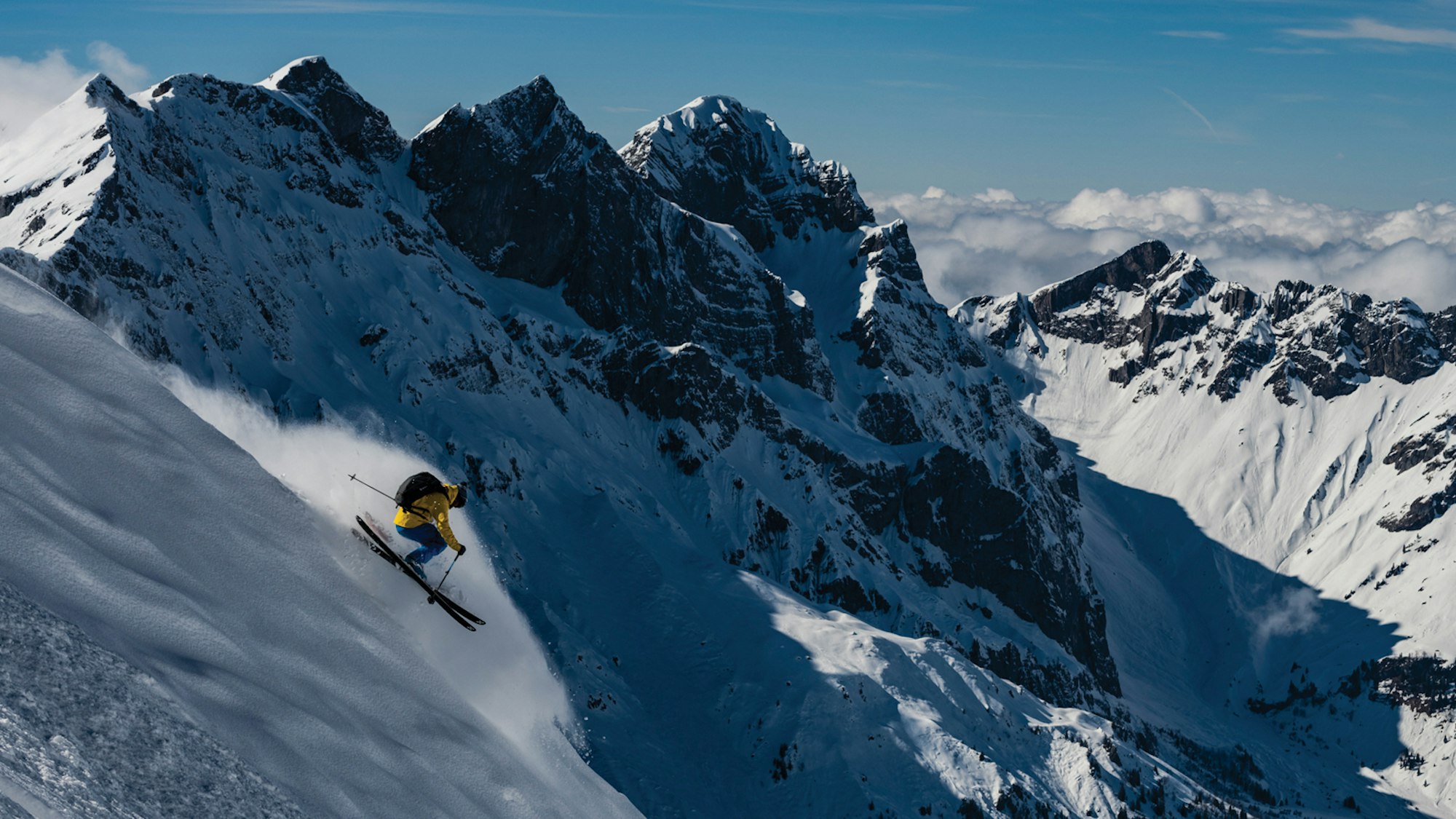WORDS • LESLIE ANTHONY | PHOTOS • MATTIAS FREDRIKSSON
We skiers are creatures of habit. When you hit it right somewhere—and by that, I mean sick powder—you tend to revisit that place again and again, especially if conditions never disappoint. In that event, rest assured others are enjoying the same return migration, and the word-of-mouth connective tissue of the ski world is certain to turn your favored find into a storied destination.
Engelberg, Switzerland, is one of those places. Here, a few adventurous skiers landing at just the right time in the convergent evolution of snowsports and mass communication swiftly propelled it into legend, creating a freeride nexus that has influenced not only the industry and townsfolk, but the lives of many beyond. Having the good fortune to have been one of those skiers, it has been an interesting transformation to witness.
Located high in the Zentralschweiz, Engelberg—“Angel Mountain”—bristles with Swiss icons: frequent, punctual train service to Zurich; a charmed central strasse lined with neat, wood-shuttered hotels; chocolate, cheese and chronometers galore; and a Benedictine monastery founded in A.D. 1120. It’s also one of the country’s oldest winter resorts, with 114 years of skiing under its belt. All good fodder for a ski writer, of course, but it’s Engelberg’s titanic terrain and reliably prodigious snows that consistently draw me back—as well as the friends I’ve enjoyed these with.
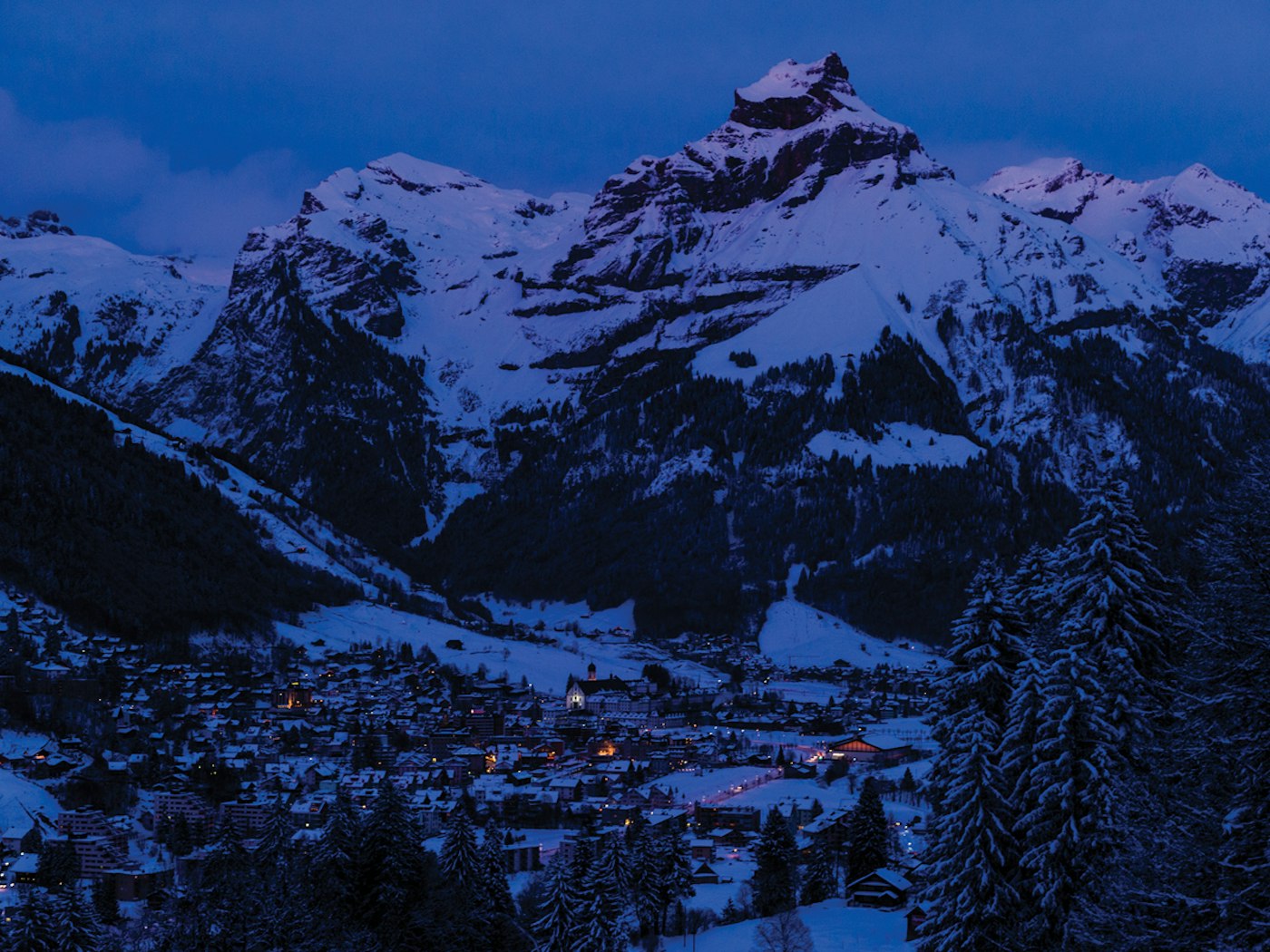
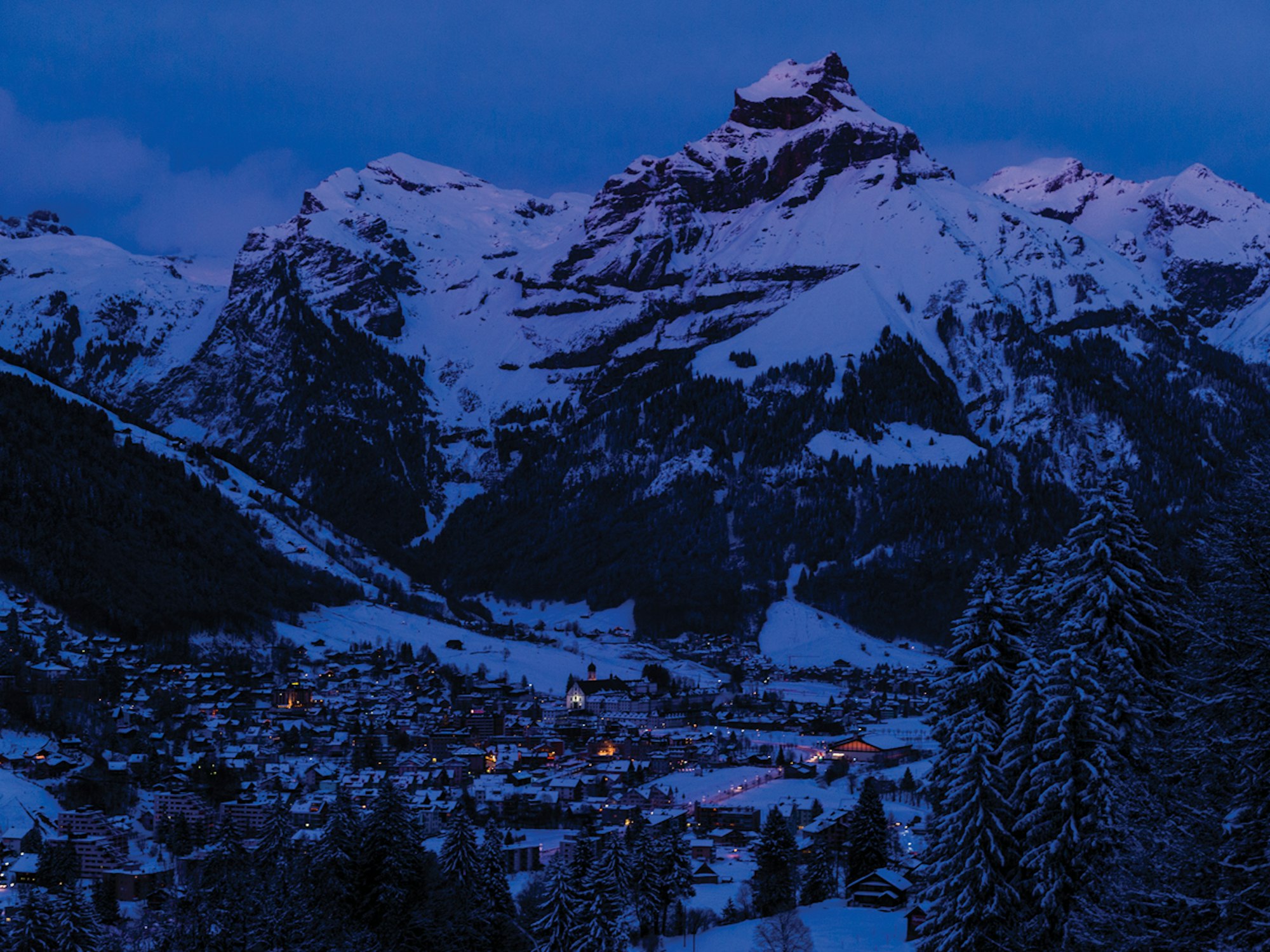
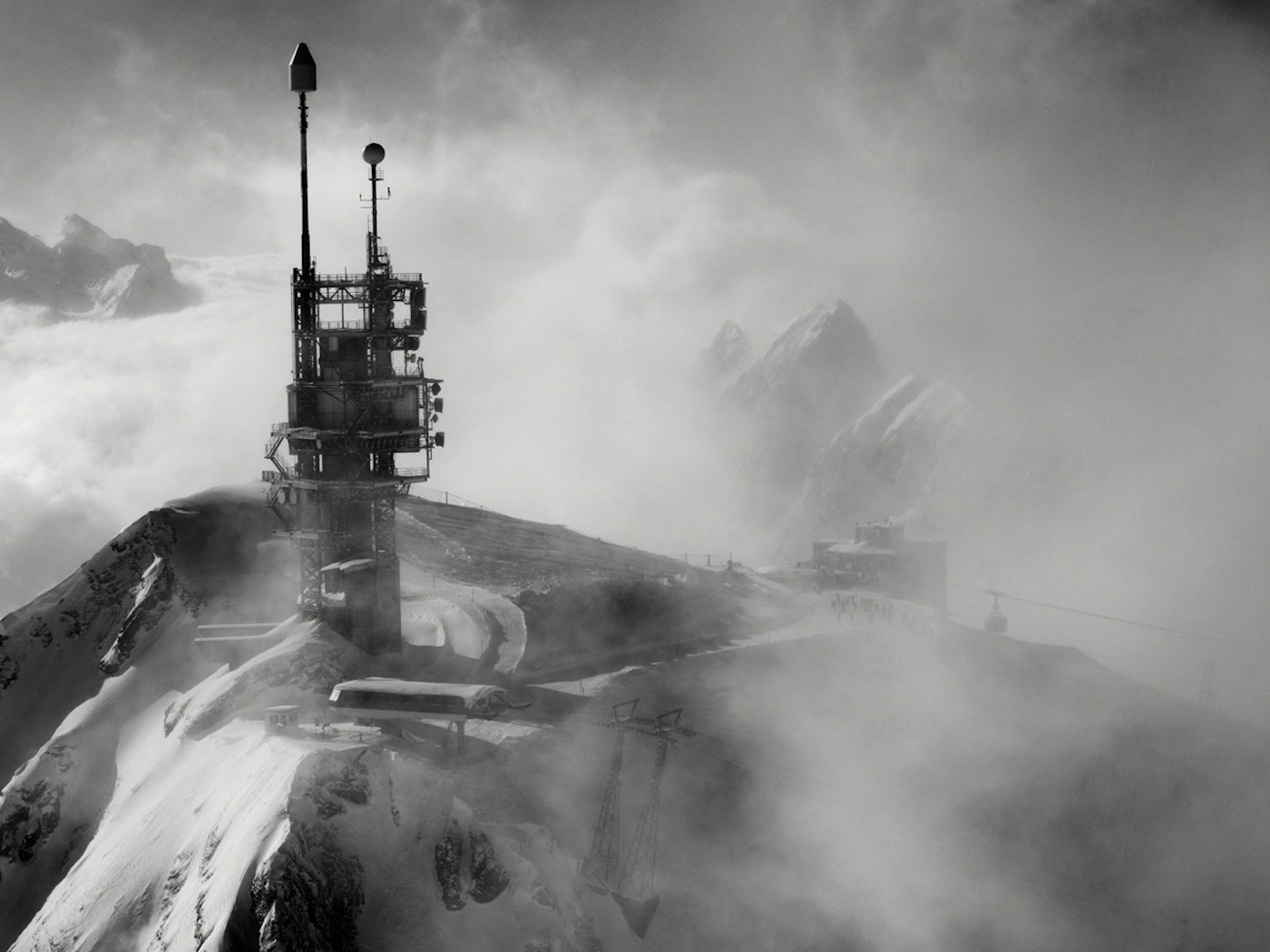
A moody view of Titlis.
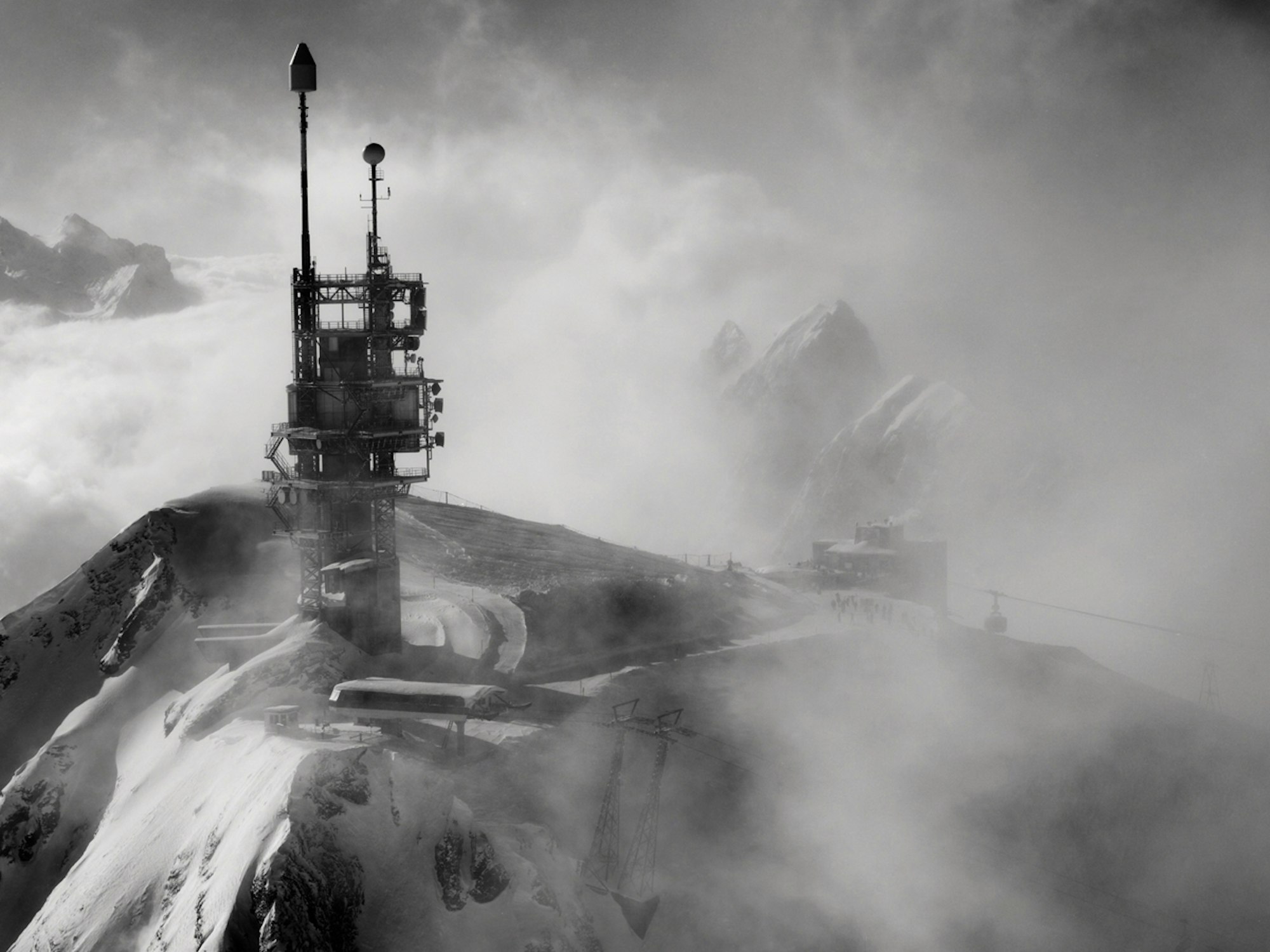
A moody view of Titlis.
One of those is Geny Hess, whose genealogy here dates to the 1600s. Back in 1996, on an assignment to seek out unheralded European ski areas, I had arrived in Engelberg to post up at his family-run Hotel Hess. Instructive on matters of both food and the contents of his enormous wine cellar, Geny also proved to be The Man when it came to deconstructing the ski area’s manifold secrets, leading me on several life-altering descents. It began on my first day, when we met at a mountain bar overlooking the resort’s marquee Titlis Glacier. As we sat considering where to ski, a guide and his client had etched improbable first-tracks down the waterfall of ice below us. Geny drained his cider, pulled on his toque (editor’s clarification: beanie), and declared: “I think we go there…”
We’d crammed ourselves into the “Rotair”—at the time the world’s first rotating aerial tram—debarking at 10,000-foot Klein Titlis where, with zero ceremony or caution, Geny dropped onto the glacier. Wide-eyed, I followed as he swooped lock-legged between seracs through a Whistler’s-worth of knee-deep powder. The sun was out and the snow excellent, so we made a second run.
It went so well that Geny suggested we finish the day on the Geltiberg, a white-knuckle, 6,600 vertical-foot, off-piste gem that hour-glassed into a rock canyon and doglegged over hanging terraces. Tipping onto a sunlit glacial tongue above a shadowy gorge, we slid down a giant throat to be swallowed by the Alps. Though excellent snow couldn’t obviate the dangers of the descent, Geny was in his element, the reserved hotelier whooping at times like the brash Canadian he accompanied. We’d regrouped at traditional safe points, Geny explaining the route and hazards—a narrow ridge above a gaping plunge that had to be side-slipped; a careful traverse to a series of ramps beneath massive cliffs. At most stops he’d simply grinned from ear to ear, but at one he’d gazed contemplatively across the valley. “My friends and I were first to ski the Geltiberg,” he’d said in a quiet voice. “It was June 5, 1965. We started in powder at the top and ended in corn right here—then we had to walk a fair way down.”
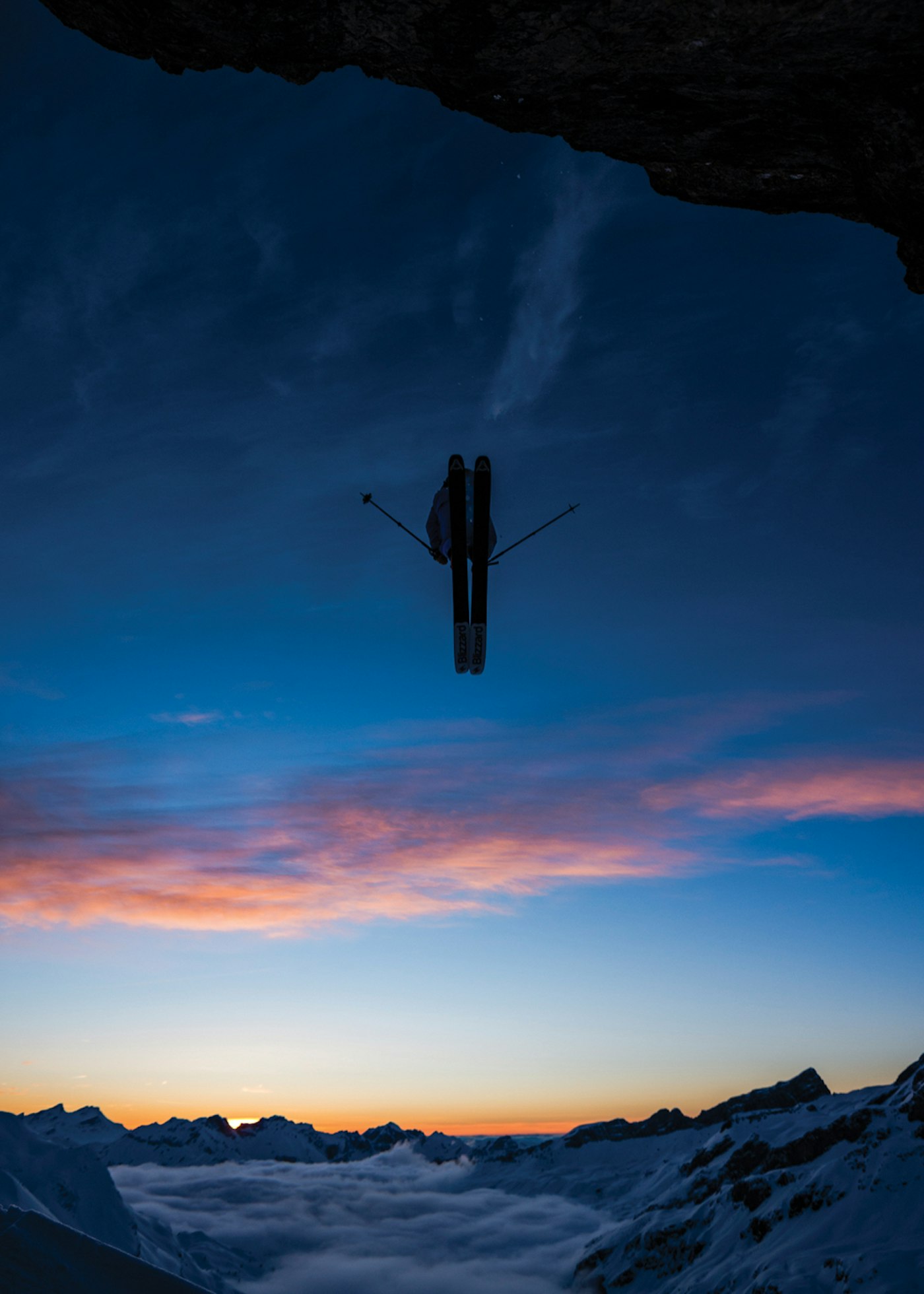
SKIER: Johan Jonsson
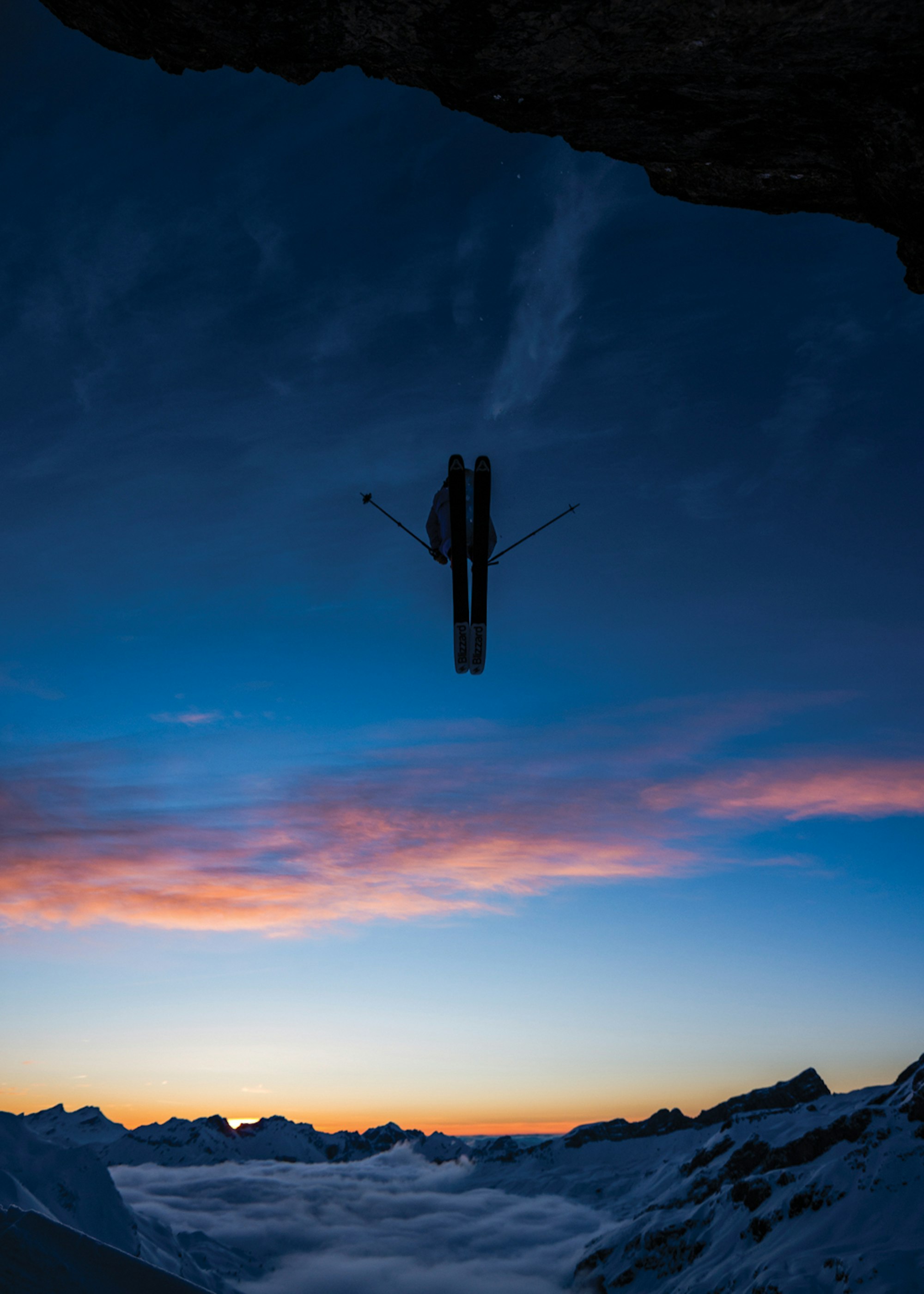
SKIER: Johan Jonsson
This day, it was another 15 minutes of skiing and a half-hour of bushwhacking before we hit the valley floor and a bus back to town, one of Angel Mountain’s mythical stashes under our belts.
With two feet of snow materializing like magic overnight, the next day was an Engelberg classic—best of the season according to locals. Geny and I did the Titlis Glacier again, where, at the bottom, he proclaimed with great solemnity: “Now it’s time to make the Laub.”
If “Laub” doesn’t mean magnificent, it should. I’d first encountered the run as a black-and-white photo in an old British book, The Ski-runs of Switzerland, depicting a monstrous face with a shallow central gully. With a sustained 40-degree slope and 4,000 feet of vertical it’s a run like no other, and in powder, it’s mind-altering. North American heli-ski operators wouldn’t think of cutting clients loose on something so long and steep. At the top we stopped and dug a snow-pit, and Geny related a terrifying ride he’d taken down the Laub when he was young. Skiing alone, three turns in the slope had released, rocketing downward in a billowing powder storm. Miraculously, Geny popped up over 3,000 feet down the face, buried to the chest, minus his rucksack and skis, barely alive but a whole lot wiser. The Angel had spared him.
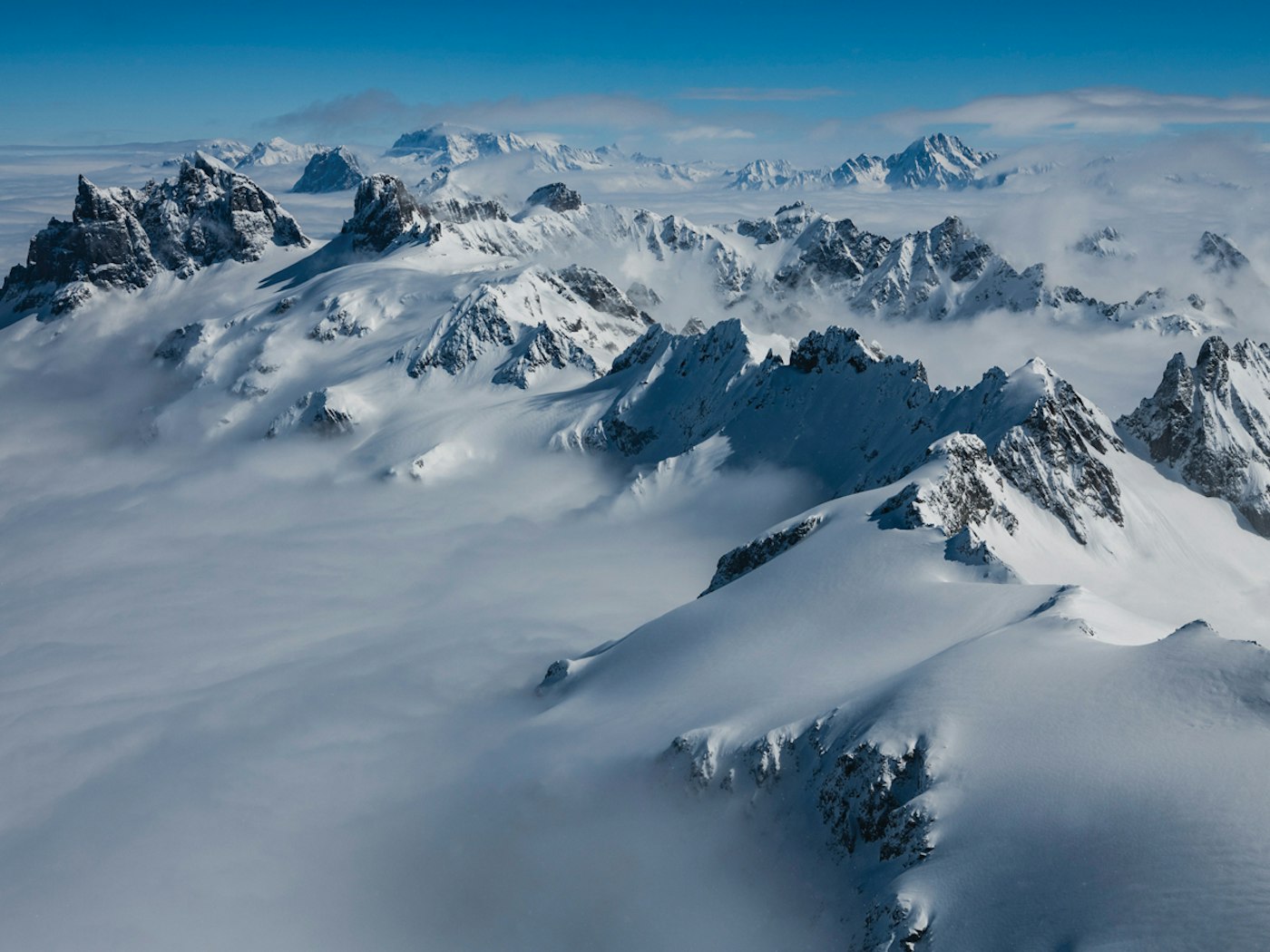
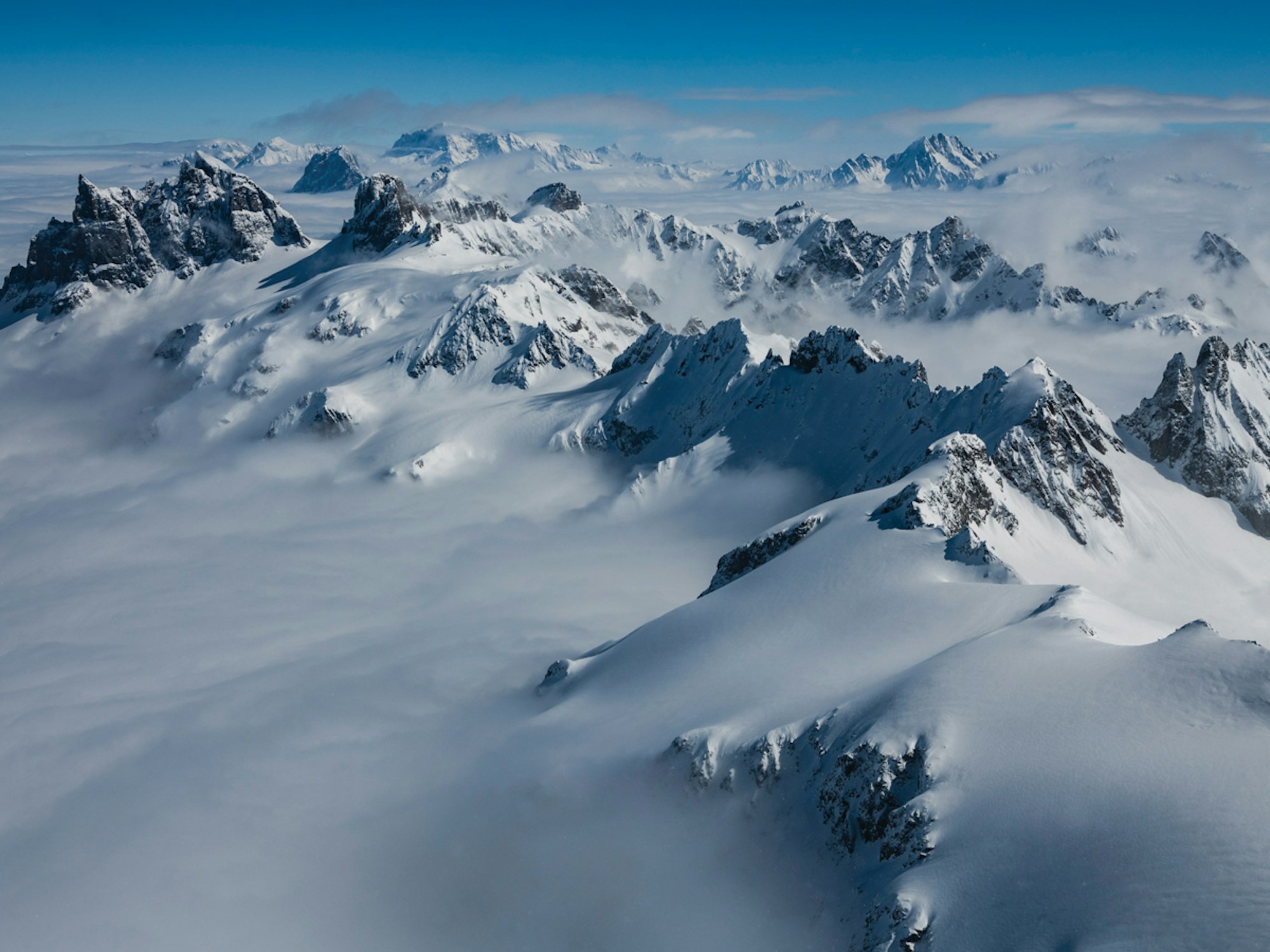
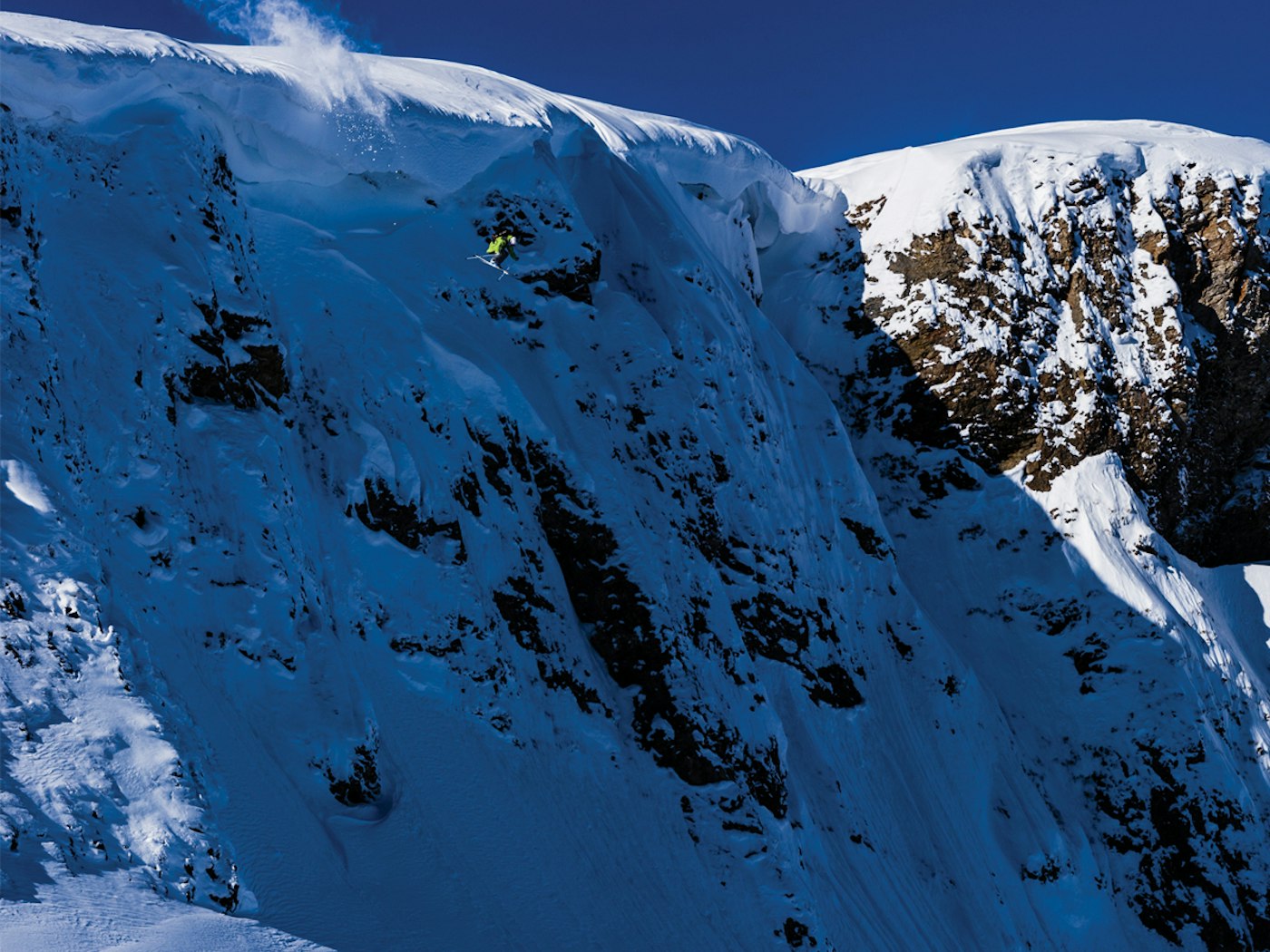
SKIER: Adam Widén
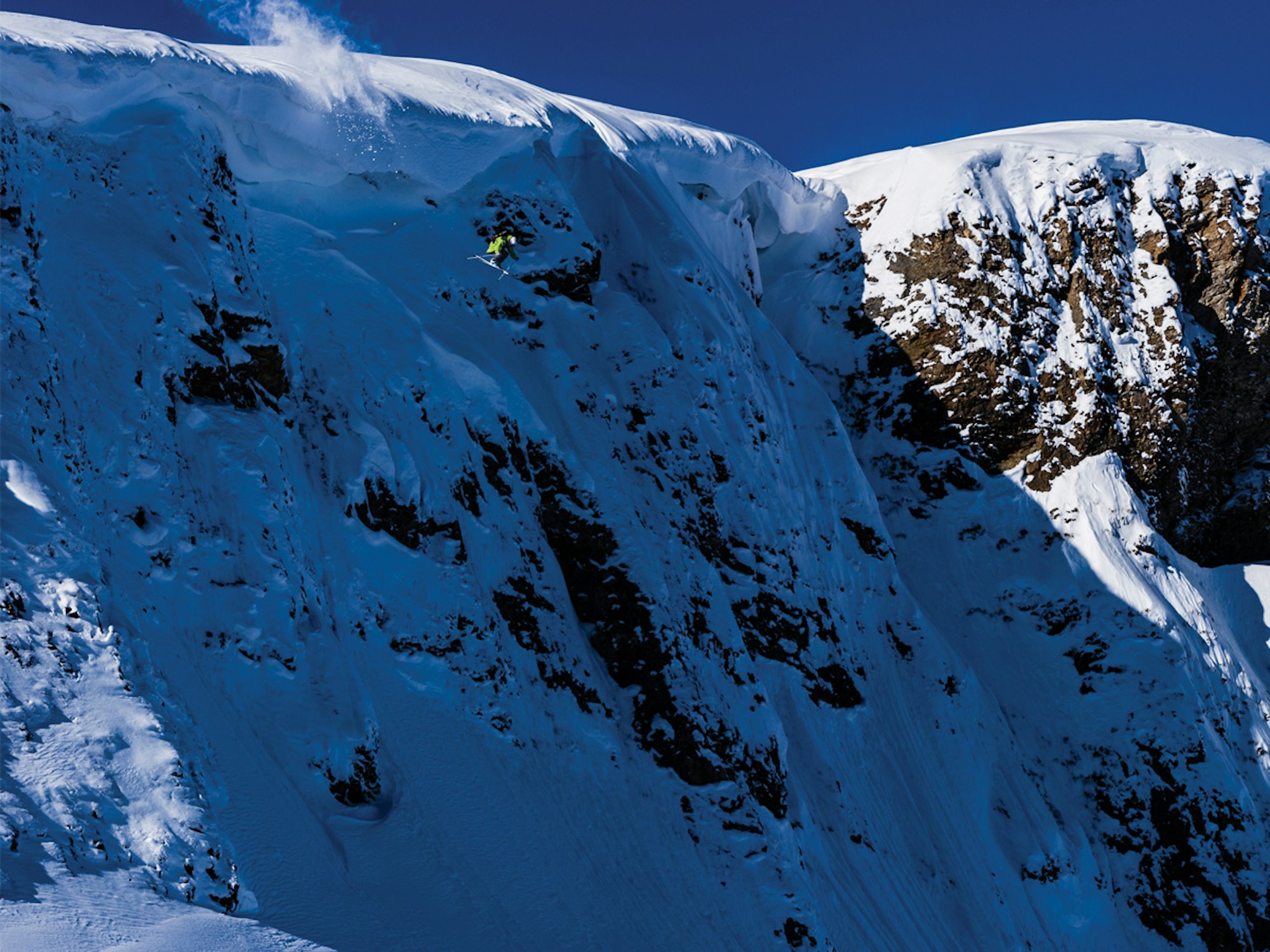
SKIER: Adam Widén
Back in 1996, with its reputation for fearsome avalanches not yet diminished by the stabilizing effects of skier-compaction that legions of freeskiers would eventually bring, the Laub’s steep northeast ramp still required care. There were tracks aplenty that day, but also plenty of untracked. We tip-toed in, greeted by sunny face shots and our own exclamations. Hundreds of turns and many stops later, we celebrated with a traditional coffee and schnapps on a hotel deck, congratulating ourselves on a day that would forever endear me to this mountain.
Engelberg deservedly went on to become one of the freeride epicenters of the Alps, for which I’ll accept some blame, but I’ve always been grateful for Geny’s helping me experience it in its original intimidating state.
“Hundreds of turns and many stops later, we celebrated with a traditional coffee and schnapps on a hotel deck, congratulating ourselves on a day that would forever endear me to this mountain.”
The headlock of Swiss tradition ensures that not much changes even while the ground beneath the country is shifting. Engelberg perfectly exemplifies this duality: still a quintessential Swiss town of only 4,000 souls plus a bad ass ski mountain, the ground here has not only shifted, but ruptured wide open. The daily busloads of Chinese and Indian tourists lining up to ride to the top of Titlis to see glacial ice attests to this, as can a Swedish tide that sparked a shift in the town’s sensibilities. Engelberg’s popularity indeed soared since my first visit in 1996, when it was an unknown backwater with only two Swedish ski bums who lived in a barn; nowadays hundreds of them spend the season here and about 12 percent of Engelberg’s international tourism originates in Scandinavia. The pervasive diaspora handily explains how the resort’s terrain, on which powder hitherto languished for weeks, now requires creative planning to make the most of.
Though they’ve done their best to ignore it, the reality is that much else has also changed in the meticulous, ordered world of the Swiss during this period. Despite resisting the siren call of the European Union, they’ve nevertheless been dragged headlong into globalization and the stain of pop culture. But Engelberg’s new thinkers are an even match for this juggernaut, shoring up the old Switzerland by celebrating its traditions in novel ways—none better than the nouveau chalet camaraderie of Ski Lodge Engelberg.
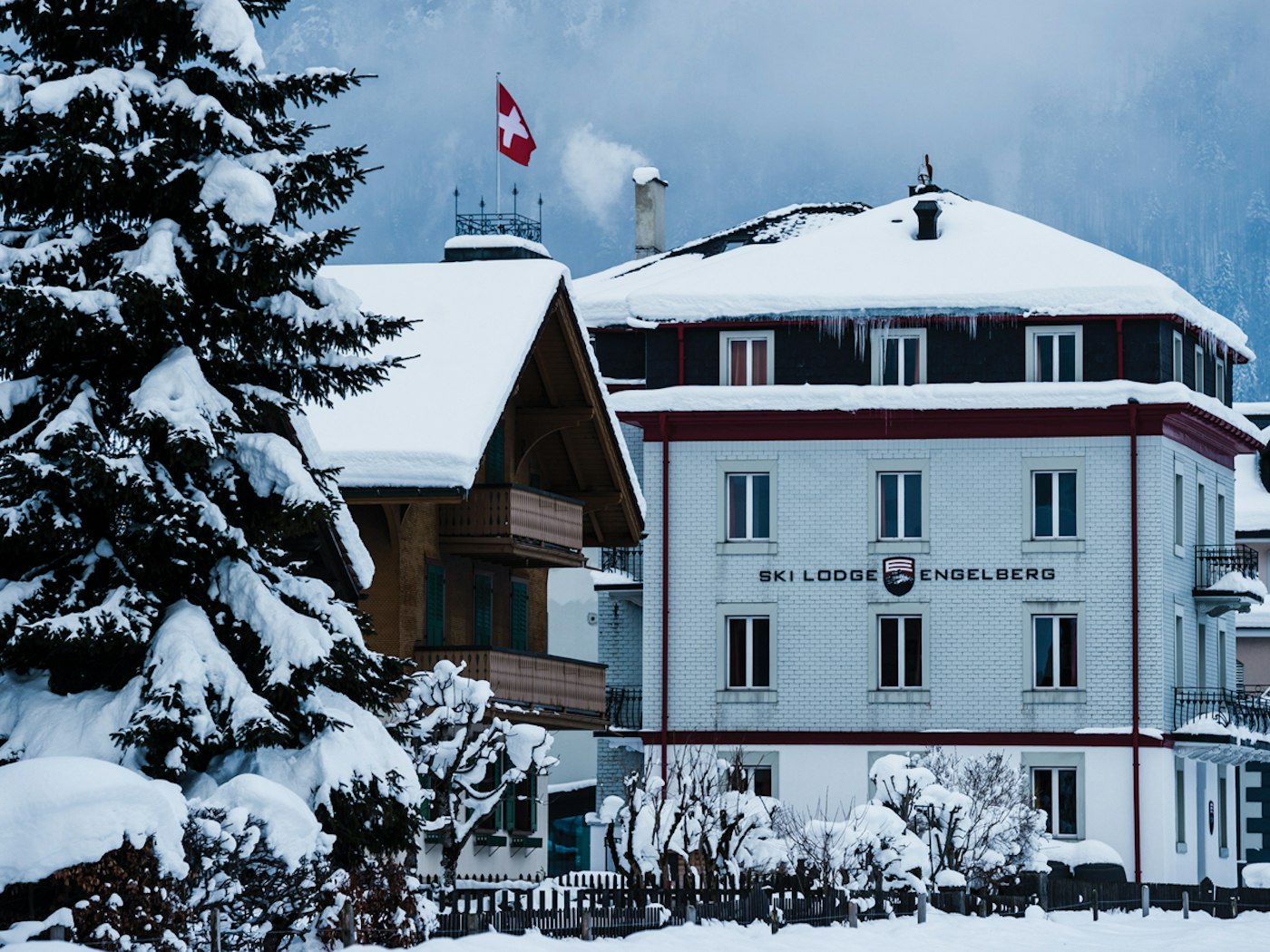
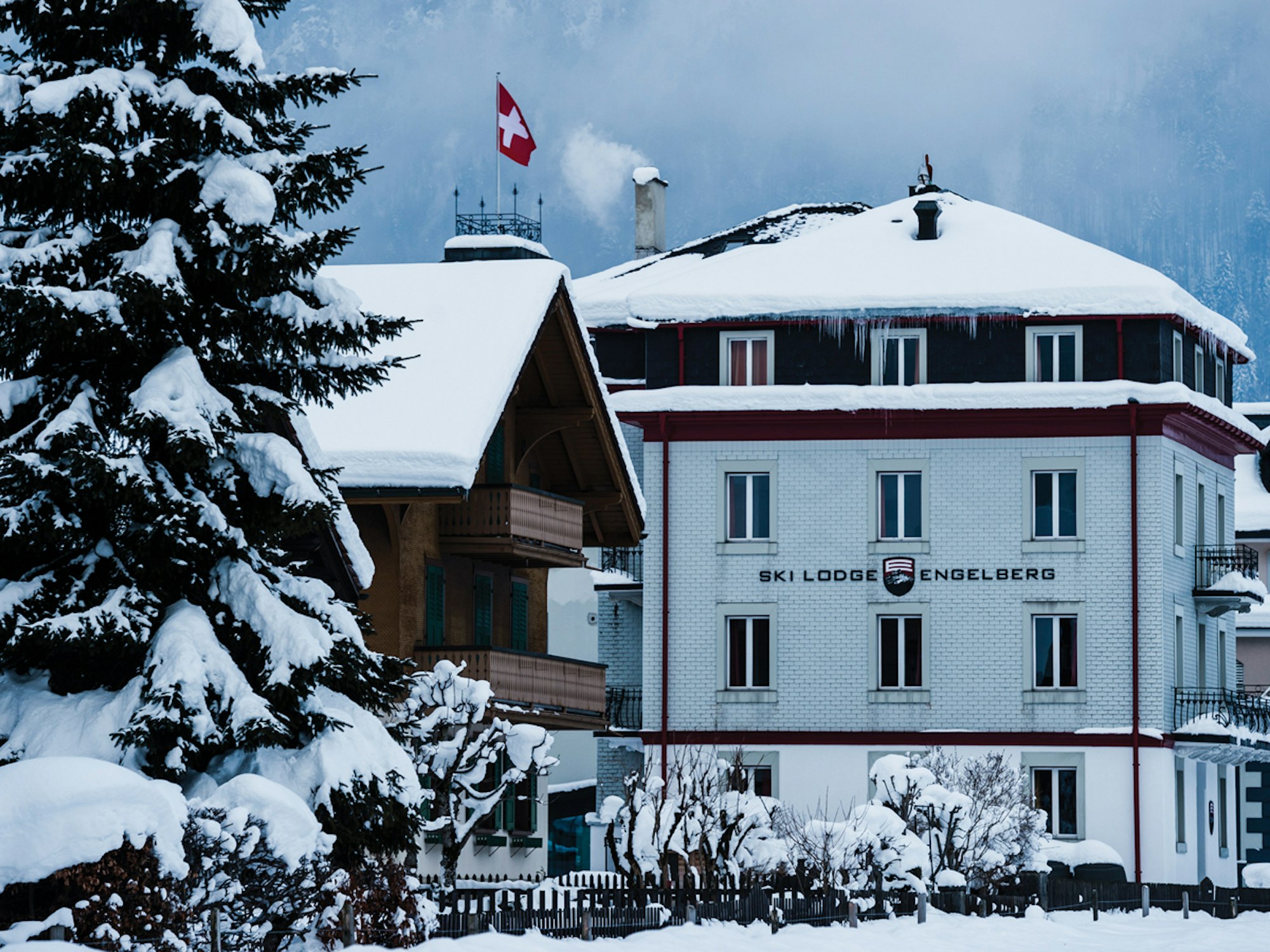
Like other Swedes born of a ski-video generation that encouraged them to seek out the steep-and-deep in foreign locales, Eric Spongberg and Niklas Möller had ski-bummed in Engelberg during the first years of the new millennium. After moving on to work in the financial sector in London, they returned to vacation each year. The easily accessed off-piste and charmed atmosphere sparked the idea of running their own place for like-minded skiers. When two adjacent century houses across from the train station went up for sale in 2008, the boys snapped them up, quit their desk jobs and moved to the Alps, eager to learn how to run a hotel. And learn they did. Ski Lodge Engelberg quickly became the center of the local freeski universe, synonymous with a revolving global door of hardcore riders and pros, photographers and filmers, a crown it can claim to this day. The boutique hotel was lovingly renovated with an eclectic décor that mixed Stockholm chic with Alps classic; the exceptional restaurant and happening bar are always packed.
Get to Engelberg
Flying in to Zurich (ZRH) will put you just 20 kilometers from Engelberg. A train ride with a connection in Lucerne will get you to the center of the village in just over two hours or, if you choose to rent a car, you can drive to Engelberg in just an hour and 20 minutes.
Accommodations
Ski Lodge Engelberg offers three different room designs in the heart of the village. For the solo sleepers, a Squeeze Room gives a foldable bunk bed and enough storage for all of your gear at $260/night. A Twin Room is ideal for a pair of friends as it has two separate beds for $340/night and couples can get cozy in a Mini Double room, also for $340/night.
To be fair, change was already underway. Geny’s Hotel Hess, a village landmark since 1884, had been condemned and razed in 2001, and several new restaurants and a renovation of historic Hotel Terrace coincided with Engelberg’s 100th anniversary in 2004. But it was the advent of Ski Lodge Engelberg that was truly emblematic of a new rising vibrancy, reflected in the meticulous planning of things like the Titlis Resort, Engelberg’s first modern real-estate development that now occupies a large chunk of land across from the main lift station. Other hotel makeovers that could never have been imagined a few years before followed suit. Swedish financier Stefan af Petersens renovated the creaky Hotel Hoheneck after carefully wresting it from the hands of its long-time owner, a crusty, change-resistant character to whom the town was happy to wave goodbye. Like Ski Lodge Engelberg, this property soon vibrated with Canadians, Americans, Brits, Spaniards, Italians, Norwegians and a healthy cadre of Swedes, many of whom were on freeride tours with overseas operators.
This sea-change encouraged local investment in other old properties: the massive Bellevue, little more than a ghetto when I first visited, was renovated in two stages, followed by Hotel Engelberg, the Waldegg and Alpenclub. More century houses were bought and converted to sexy boutique hotels, new clubs and restaurants of every caliber popped up, and the Grand Hotel Titlis Palace, a new five-star hotel featuring 120 suites, a spa and multiple restaurants is set to open around December 2020. To some it seems too much, but the saving grace of this flourishing commercial renaissance is the mountain: still big enough to absorb the influx, still snowing enough to keep everybody happy.
Switzerland’s first ski club was founded in 1893, the same year that Hans Immer, Melchior Thoni and J. Berg crossed the lofty Jochpass from Meiringen to Engelberg.
The resort’s official birth, however, is pegged as January 1904, when skiers first reached the summit of 10,600-foot Titlis and skied to the valley. Whether the act of madmen or too much schnapps, descending its precipitous glaciers on early ski gear remains a notable feat, and more “daredevils” soon arrived to experience Engelberg’s high-alpine thrills and consistently deep snows.
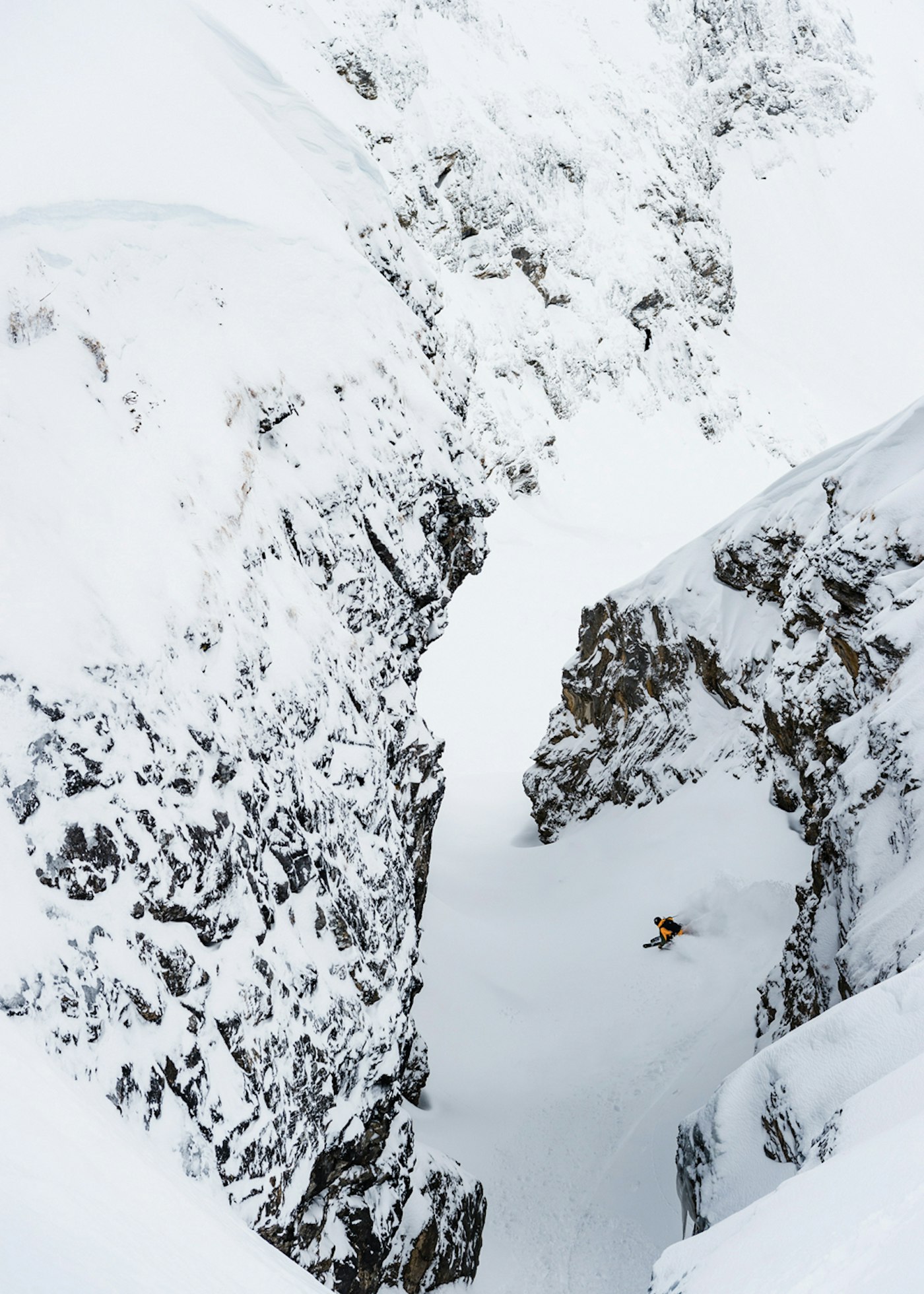
SKIER: Johan Jonsson
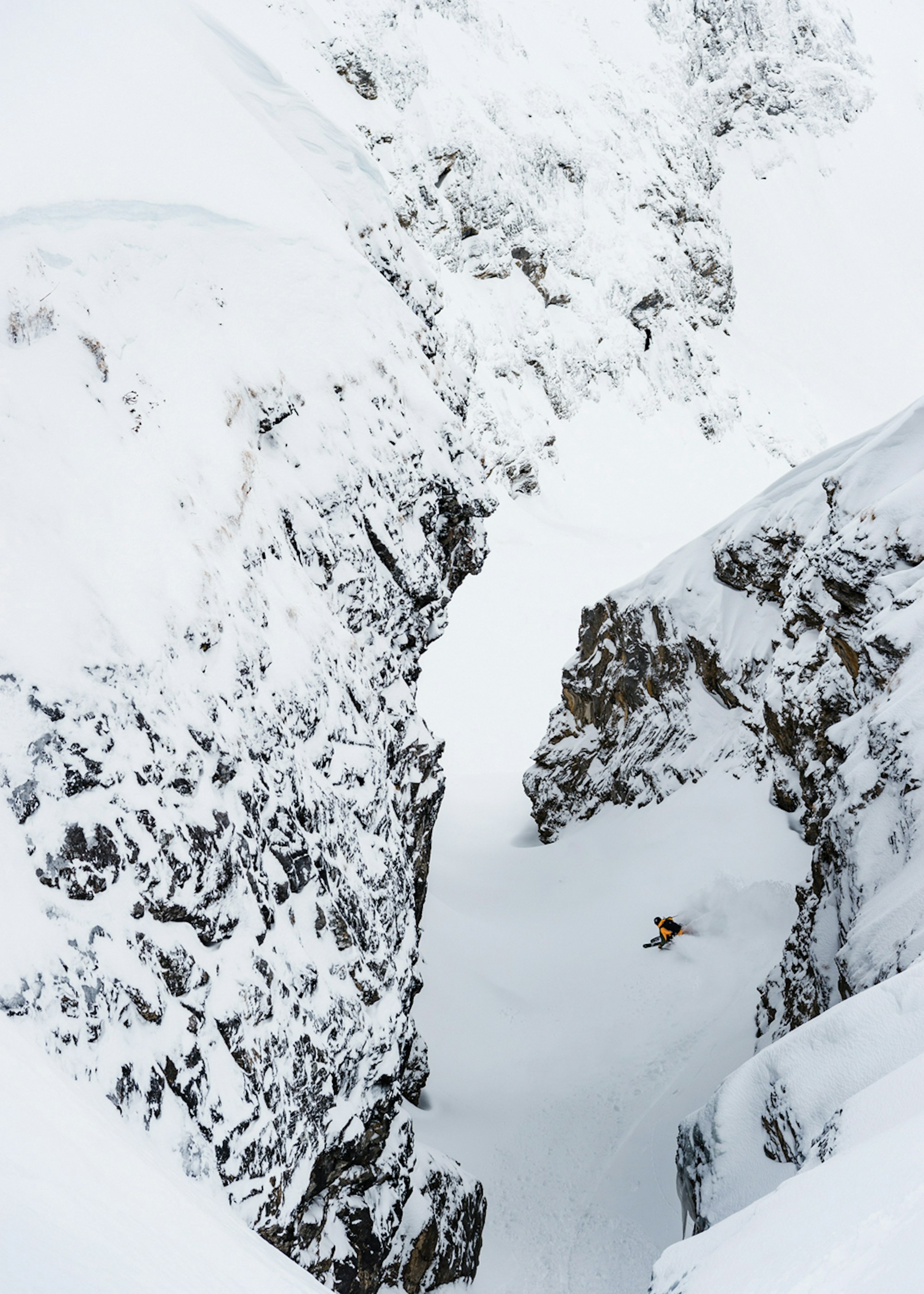
SKIER: Johan Jonsson
On my last trip there in February 2018, it once again snowed big overnight and throughout the first day. With two feet in most places, more in some, the instantly excellent powder once again quashed any fear that I might have made a bad call. Was it snowing this much elsewhere in Switzerland? Not nearly, which is a testament to Engelberg’s unique powdermaker: centrally positioned and blessed by altitude, the convoluted massif of central Switzerland’s largest ski area remains a weather magnet brushed by the northern edge of southern storms and the southern edge of northern storms. Add 40 miles of pistes and enormous skiable acreage stretching over the Gerschnialp, Trübsee, Joch Pass, Stand and Titlis areas and you have a Russian doll for powder aficionados in which every turn reveals another chunk of hidden terrain—glaciers, couloirs, chutes, trees and plenty of off-piste, including, of course, the Laub.
As per a half-dozen previous visits, skiing was amazing that day, despite having to stick mostly to lower aprons where the trees offered deep snow and maximum definition. But after a morning of being blissfully astray on a mountain of seemingly eternal proportions, serenaded by the lilting strains of Swedish on every lift ride, I’d left my group to meet up again with Geny Hess for lunch.
Over wood-oven pizza and beer in the Alpenclub, a log building that had stood strong since 1780, I fell, as always, under the spell of Europe’s timelessness. Outside, the curtain of snow pulled back and the Laub came into view through the window, shimmering in the sun, a beckoning memory. Geny, now in his 70s and the owner of a wine store and restaurant, cocked his head toward the window and flashed a half smile.
He didn’t have to say anything.

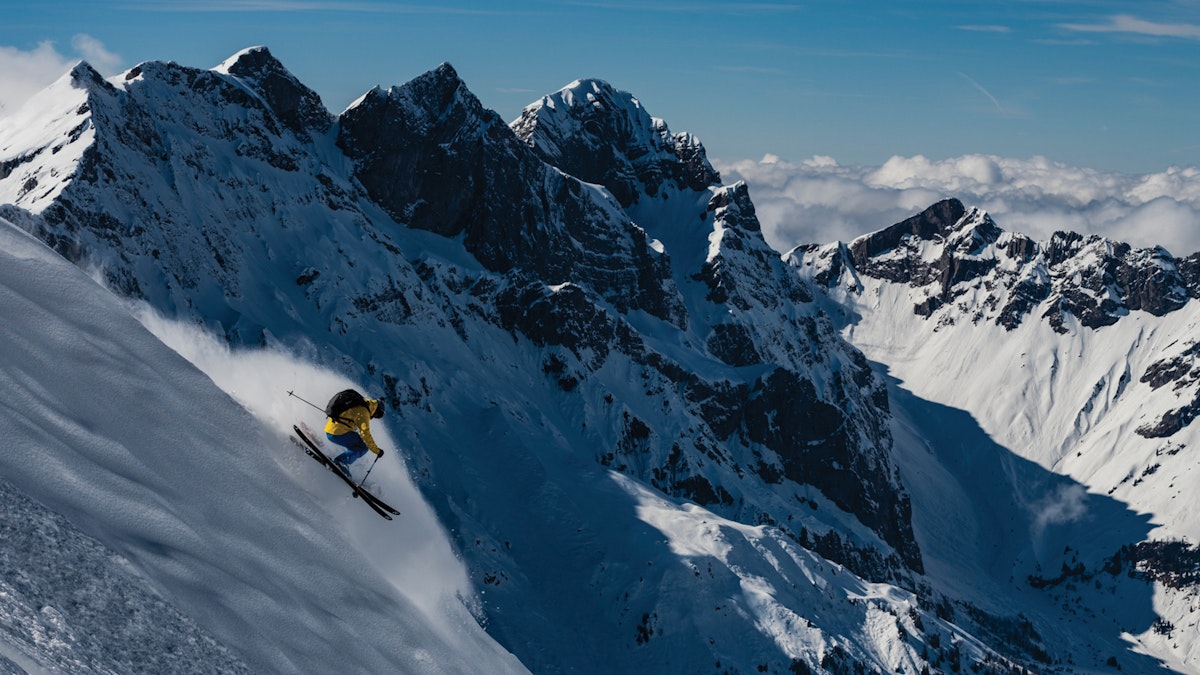
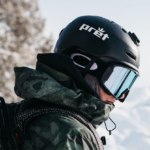
![[GIVEAWAY] Win a Head-to-Toe Ski Setup from IFSA](https://www.datocms-assets.com/163516/1765920344-ifsa.jpg?w=200&h=200&fit=crop)

![[GIVEAWAY] Win a Legendary Ski Trip with Icelantic's Road to the Rocks](https://www.datocms-assets.com/163516/1765233064-r2r26_freeskier_leaderboard1.jpg?w=200&h=200&fit=crop)
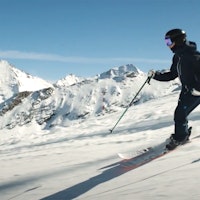
![[GIVEAWAY] Win a Legendary Ski Trip with Icelantic's Road to the Rocks](https://www.datocms-assets.com/163516/1765233064-r2r26_freeskier_leaderboard1.jpg?auto=format&w=400&h=300&fit=crop&crop=faces,entropy)




![[GIVEAWAY] Win a Head-to-Toe Ski Setup from IFSA](https://www.datocms-assets.com/163516/1765920344-ifsa.jpg?auto=format&w=400&h=300&fit=crop&crop=faces,entropy)


